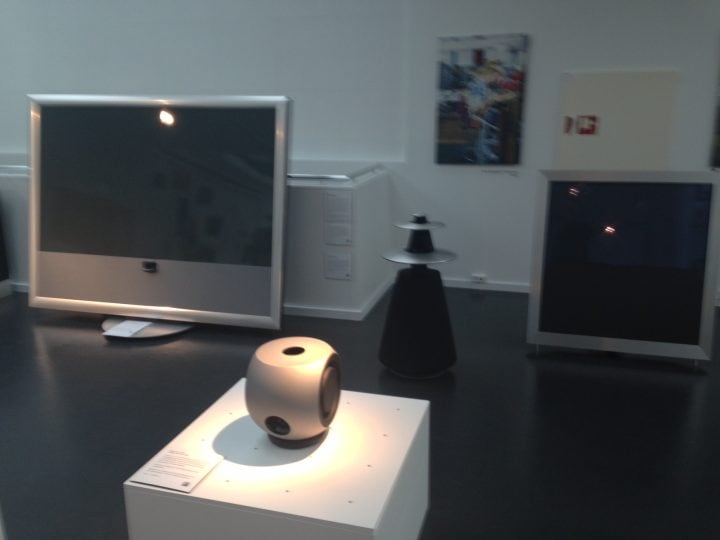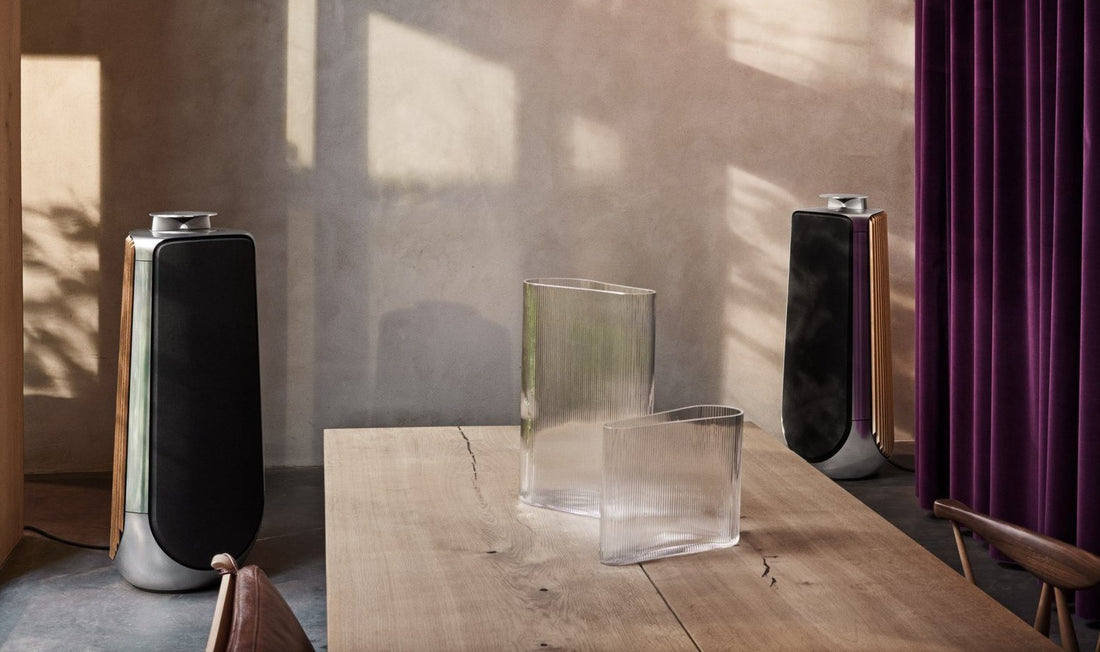Continuing from Part 1 , we’ll look at more legacy Bang & Olufsen products in the city museum of Struer, Denmark, B&O’s home for nearly a century. In the last issue, we looked at B&O products from the company’s early days up through the pre-WWII era.
The small city’s lengthy association with and reliance upon B&O means that the company’s products are seen throughout the town. As I posted on Part 1, “…I was amused to be staying at the town’s only hotel, an austere place misleading called the Grand Hotel. The room was as unyielding and uncomfortable as most college dorm rooms, with a 2″ thick mattress and a shower that was little more than a hose and a drain.
“BUT: every room had a giant, beautiful Bang & Olufsen television. There wasn’t much to watch, mind you, but by God there was a beautiful picture.”
You gotta love a company town. Having grown up in the home of Spam, the blue-and-yellow cans of which were everywhere—give me B&O, any day.
But I digress. Let’s take a look around—and again, sorry for the fuzzy pics. iPhone 4 images don’t always blow up well….




 The big Beovox 5000 speakers from 1967 were among the first products designed by Jacob Jensen for B&O, and the small omnidirectional cube 2500 tweeters were an optional aid to dispersion, still a focus of B&O speakers today.
The big Beovox 5000 speakers from 1967 were among the first products designed by Jacob Jensen for B&O, and the small omnidirectional cube 2500 tweeters were an optional aid to dispersion, still a focus of B&O speakers today.
 More Jensen designs, ca. ’69. BeoGram 1200 ‘table, BeoCord 1200 r-to-r, and the BeoMaster 1200 receiver, which won the ID prize from the Danish Society of Industrial Design. B&O’s “slide-rule” controls began here.
More Jensen designs, ca. ’69. BeoGram 1200 ‘table, BeoCord 1200 r-to-r, and the BeoMaster 1200 receiver, which won the ID prize from the Danish Society of Industrial Design. B&O’s “slide-rule” controls began here.









The just-announced collaboration with LG, the BeoVision Eclipse with OLED display. 55″ is ~$11,000; 65″, ~$15,000. (Pic: B&O)
I’ve written before of some of the changes and missteps B&O has experienced in recent years. While some of their products of late have been more striking than attractive—like the BeoLab 90 shown above—the recent launches of the BeoLab 50 and BeoVision Eclipse give me some hope that future products can once again be innovative AND attractive. While they may not be up to the level of some of Jacob Jensen’s masterpieces, today’s product-briefs are rather more involved than those from the ’60’s and ’70’s.
—Yes, I suppose I am cutting them some slack. I’d like to see the brand become relevant and world-leading, once again.
One last thing: if you have the slightest interest in B&O, past or present, the British website BeoWorld is a must visit. It is endlessly informative and rigorously comprehensive.



